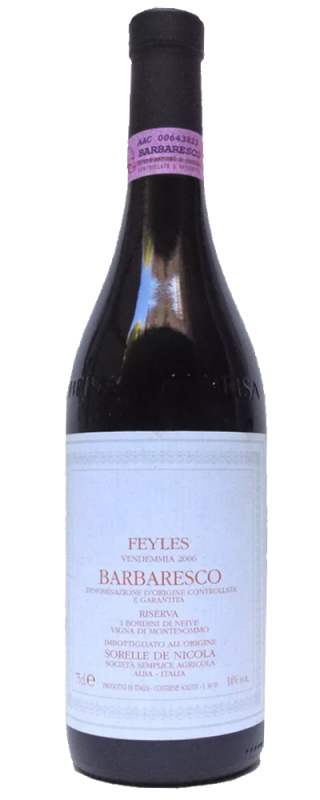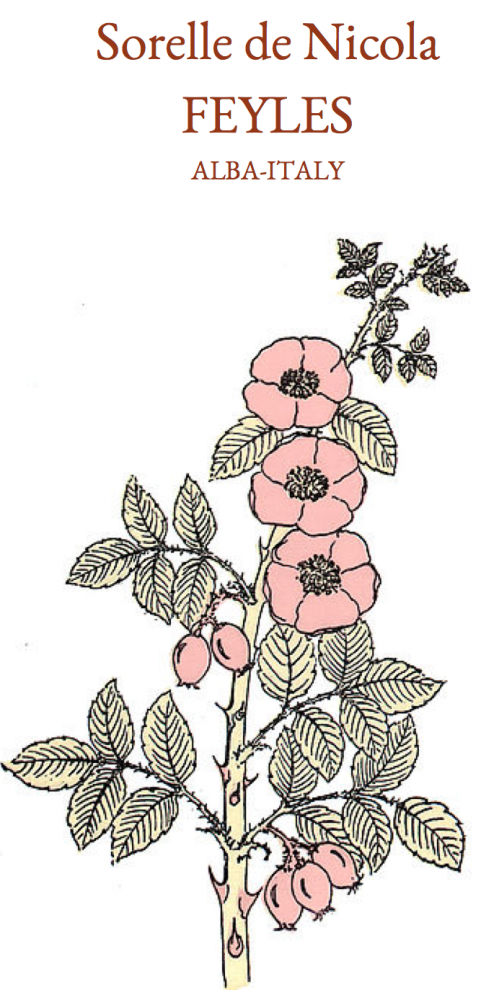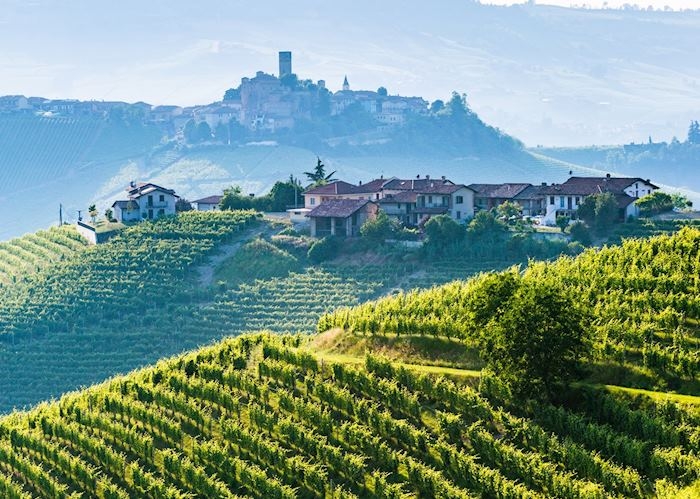Wines
Barbaresco Riserva Feyles Docg 2014
Ruby red, bright but not deep, with orange tints. Intense, ample and persistent, with notes of faded violet and tobacco. Full-bodied and harmonious, with hints of plum, walnut husk and wild berries.
| Grape variety: | 100% Nebbiolo. |
| Vineyard of origin: | “Montesommo” vineyard, facing Bordini area in the municipality of Neive (Cuneo). The vineyard was planted in 1970 with Lampia Nebbiolo clones; it faces southwest and extends for about a hectare and a half. |
| Harvesting: | Late October. |
| Winemaking: | Traditional extended maceration. Fermentation on wild yeast takes up to 30 days, at room temperature and in steel vats, with remontage to break up the submerged cap. |
| Ageing: | Refinement lasts for about 24 months in Slavonian oak barrels of medium capacity (30-50hl), after the natural clarification. It then continues for at least about another 24 months in bottle, before commercialization. The wine is neither filtered nor fined; a thin sediment is possible and decanting is recommended. |
| Alcohol content: | About 14°. |
| Serving temperature: | 18-20° C; 64-68° F. |
| Food pairings: | Meat dishes, especially roasted meats and game birds, as well as tangy cheese. |

Feyles Sorelle de Nicola
The winery was founded in 1964 by Maria Feyles and Antonio de Nicola, her son-in-law. They first invested in the purchase of the Montesommo vineyard, a parcel of land in the village of Neive, in the heart of Barbaresco production area. Other parcels have been progressively acquired in the Langhe hills, and the company now owns more than 7ha of vineyards. They are planted mostly with Nebbiolo grapes, along with Barbera and Dolcetto grapes. The family has consistently shown its dedication to tradition, in the vineyards as well as in the winery. The goal has always been to produce distinctive wines, true expression of the grapes and of the local terroir.

Piemonte
From Asti Spumante to Barolo, the wines of Piedmont are among Italy’s most prolific and best rated. The region’s pedigree is apparent in its 58 DOC and DOCG zones, and although it is only the sixth largest producer in terms of volume, it has the highest percentage of classified wines in all of Italy. No IGT wine area is identified. This westerly region that borders with Switzerland and France is influenced by the Alps and Apennines (the name Piedmont means "foot of the mountain") and its seasons are very distinctive. Hot, dry summers, cold winters, and temperate springs and autumns are common with occasional fog during harvest time.
Undoubtedly it is the red wines that lead the way in terms of quality and cellaring potential with wines made from the noble Nebbiolo grape. The DOCGs of Barolo, Barbaresco, Gattinara, Ghemme and Roero all represent the grape at its finest: they are complex, alluring wines with extraordinary depth and great ageing potential. Barolo ("king of wines and wine of kings") is made in the Langhe hills with its output of 6 million bottles a year far exceeding that of Barbaresco at less than 2.5 million.
